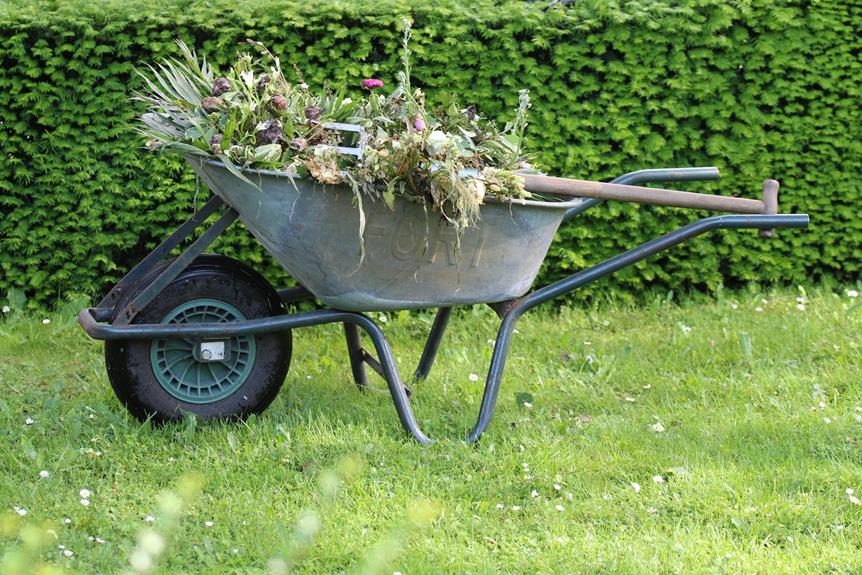Do Coffee Grounds Make Good Compost? A Gardener’s Guide

As we consider the role of coffee grounds in composting, we find ourselves intrigued by their potential benefits. Packed with nitrogen, these grounds can enhance microbial activity and improve soil health when used correctly. However, we need to be mindful of how much we incorporate, as balancing them with carbon-rich materials is essential. So, how do we strike the right balance, and what best practices should we follow to avoid common pitfalls? Let's explore these questions and uncover the true value coffee grounds can bring to our composting efforts.
Benefits of Coffee Grounds
Coffee grounds offer a wealth of benefits for our compost piles, enhancing both nutrient content and microbial activity.
By adding these grounds, we boost garden productivity through improved soil structure and moisture retention.
The coffee benefits extend to attracting earthworms, essential for breaking down organic matter.
Incorporating coffee grounds into our compost helps create a thriving ecosystem for our plants and enhances overall soil health.
Nutritional Composition
When we consider the nutritional composition of coffee grounds, we find that their nitrogen content plays a vital role in enhancing microbial activity in compost.
Additionally, coffee grounds provide other essential nutrients that contribute to soil health, while their pH level can influence the overall acidity of the compost mix.
Understanding these factors helps us maximize the benefits of using coffee grounds in our composting efforts.
Nitrogen Content Benefits
The nitrogen content in coffee grounds offers significant advantages for composting endeavors.
When we add coffee grounds to our compost, we enhance nitrogen release, promoting rapid microbial activity. This boost effectively contributes to compost balance, ensuring the right ratio of greens to browns.
Additional Nutrients Provided
Adding coffee grounds to our compost not only boosts nitrogen levels but also introduces a variety of additional nutrients that enhance soil health.
These grounds contain essential minerals like calcium, magnesium, and potassium, which contribute to a balanced nutrient profile.
Ph Level Impact
Incorporating coffee grounds into our compost can considerably influence the pH level of the mixture, making it more favorable for plant growth.
Coffee grounds tend to be slightly acidic, which can help adjust the pH balance when mixed with alkaline materials.
How to Add to Compost
When we're ready to boost our compost pile with coffee grounds, we should keep a few key points in mind. Using proper compost layering techniques is essential. We recommend a coffee ground ratio of about 1 part coffee grounds to 3 parts carbon-rich materials. Here's a quick reference:
| Material | Ratio | Notes |
|---|---|---|
| Coffee Grounds | 1 | Nitrogen source |
| Dry Leaves | 3 | Carbon source |
| Kitchen Scraps | 2 | Balance moisture |
Potential Drawbacks
While coffee grounds can considerably enhance our compost, there are some potential drawbacks we should consider.
These include:
- Pest attraction, as they may invite unwanted critters.
- Acidity issues, which can affect soil pH.
- Possible overuse leading to nutrient imbalance.
- A slimy texture, complicating aeration.
- Insufficient decomposition rates if not mixed well.
Best Practices for Use
To maximize the benefits of coffee grounds in our compost, we should follow a few best practices. Proper coffee ground storage is essential to prevent coffee ground pests. We should also mix them with other materials to balance nitrogen levels. Here's a quick reference:
| Best Practice | Description |
|---|---|
| Store Properly | Keep grounds dry and sealed |
| Mix Thoroughly | Combine with carbon-rich materials |
| Use Moderately | Limit to 20% of compost volume |
| Monitor for Pests | Check regularly for infestations |
Alternatives to Coffee Grounds
As we explore alternatives to coffee grounds, we should consider other kitchen scraps and various yard waste options that can enhance our compost.
Items like vegetable peels, fruit scraps, and grass clippings can provide essential nutrients and balance to our compost piles.
Let's examine how these alternatives can effectively contribute to a healthy composting process.
Other Kitchen Scraps
Many of us may not realize that our kitchens are treasure troves of compostable materials beyond just coffee grounds.
Consider adding these kitchen scraps to our compost:
- Fruit peels
- Vegetable trimmings
- Eggshells (for calcium benefits)
- Bread scraps
- Leftover grains
These items enrich our compost, improving soil health while reducing waste.
Let's explore all the possibilities!
Yard Waste Options
When it comes to composting, yard waste offers a wealth of options that can complement or even replace coffee grounds.
We can utilize leaves, grass clippings, and small branches as excellent sources of carbon and nitrogen.
These materials enhance our composting methods by improving aeration and moisture retention, creating a balanced mix that promotes decomposition and enriches our garden soil effectively.
Final Thoughts on Composting
Although composting can seem intimidating at first, we can all benefit from its simplicity and effectiveness in enhancing our gardens and reducing waste.
Let's debunk some common composting myths and explore practical composting techniques:
- Composting is too complex.
- You can't compost kitchen scraps.
- All materials break down equally.
- Composting smells bad.
- It's only for avid gardeners.
Together, we can make composting a rewarding experience!
Conclusion
To summarize, incorporating coffee grounds into our compost can greatly enhance its quality and nutrient diversity. By maintaining a balanced compost mix and adhering to best practices, we can maximize the benefits while minimizing potential drawbacks. Coffee grounds not only improve microbial activity but also attract beneficial organisms like earthworms. As we explore alternatives, let's remember that moderation is key. With these insights, we can foster healthier plants and thriving gardens through effective composting techniques.






